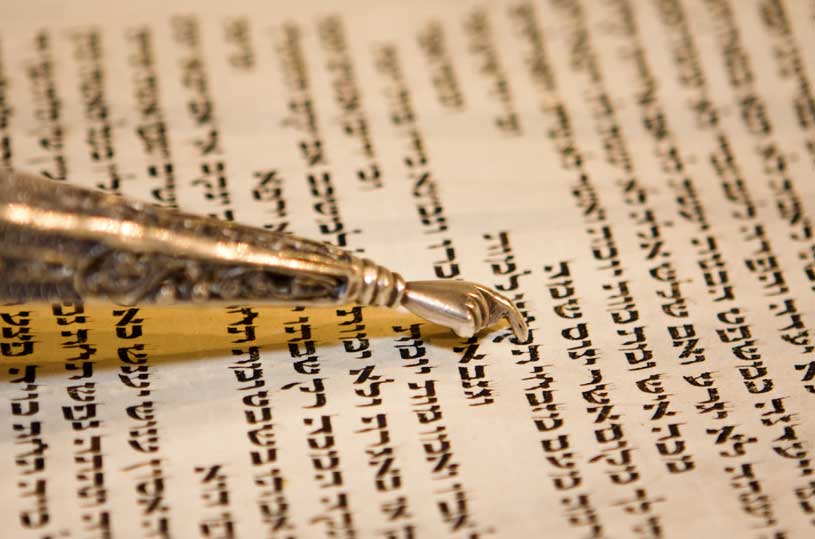The Talmud in Brachot tells us that HaShem gave the Jewish people three “matanot tovot” (special gifts); and all of them are only acquired through yissurim[1]. The three gifts are: Torah, The Land of Israel and Olam Haba.[2] The story of the Megilla shows how Ruth acquired two of these gifts (with the exclusion of Torah[3]) and had to undergo the yissurim that the Talmud promises.
The difficulty of acquiring The Land of Israel is seen at the beginning of the Megilla. The story opens with the descent of Elimelech and his family to Moav. The process of leaving Israel is covered in one short verse, “…a man and his family left Beit Lechem to live in the fields of Moav…”[4] In contrast ,the return of Naomi and her two daughters-in-law, Ruth and Orpah to the Land of Israel, is expressed in a much lengthier manner: “And she and her daughters-in-laws rose up and returned from the fields of Moav… and she left the place where she had been and her two daughters-in-law were with her, and they went on the way to return to the land of Yehuda.”[5]
It is noteworthy how many verbs are used that indicate the travelling involved in the journey back to The Land of Israel. The Megilla then describes at length the discussion between Naomi and her daughters-in-law about whether they would accompany her back.
Finally, Naomi and Ruth, return to Israel. The stark contrast of the single verse recounting their leaving of Israel, to the lengthy account of their return, teaches us that it is much easier to leave The Land of Israel than to come to it.[6]
Moreover, after Ruth and Naomi return to the land, the Megilla describes their great difficulties in supporting themselves there. In this way, Megillas Ruth demonstrates a striking example of how The Land of Israel is only acquired with difficulty.
In a similar vein, a key feature in the story is Ruth’s willingness to undergo a great deal of discomfort and difficulty in order to join the Jewish nation, and, consequently, merit a new portion in the world to come (olam haba). Our Sages tell us that Ruth and Orpah were daughters of the King of Moav. Accordingly, they merited to have a very high stature in Moav.
In contrast, by joining Naomi, they faced a life of poverty and the prospects of a low standing in society. This was because at that time there was a great dispute as to whether the Torah prohibition to marry a Moabite convert, also applied to female Moabite converts. Indeed, later in the Megilla, we see that the closest relative of Naomi’s husband, Elimelech, refused to marry Ruth because of her Moabite origins.
In addition to these obstacles, lay the numerous obligations involved in becoming a Jew. Our Sages tell us that Naomi stressed this to Ruth and Orpah; she mentioned a number of Mitzvot that would cause them to undergo great restrictions to their life. Indeed, her arguments persuaded Orpah to return to Moav. Ruth, in contrast told Naomi that she was willing to undergo all the difficulty involved in converting. Because of her willingness to undergo yissurim, Ruth merited a very unique place in the world to come (Olam Haba).
It still needs to be explained why the matanot tovot of Torah, The Land of Israel, and the world to come (Olam Haba)are only acquired through yissurim?
This can be explained through a principle that Rav Noach Weinberg zt”l would constantly emphasize. He taught that genuinely meaningful pleasure could only be acquired through challenge. For example, when people look back at the most satisfying moments in their lives, they usually mention times when they had put great effort into achieving something, such as passing a difficult exam, or they choose a happy occasion such as marriage or having children. Anyone who has experienced such times of happiness, knows that marriage and child rearing involve a great deal of difficulty and challenge. Yet, they are causes of great joy for those who make the effort.
In this vein, Torah, The Land of Israel and the world to come are the most meaningful things that a person can acquire. Precisely because of their great value, they can only be acquired with great difficulty. Ruth recognized this fact, and made the decision to forego the less ‘painful’ pleasures that life had to offer, for the meaningful experience of joining the Jewish nation in The Land of Israel.
It is no coincidence that we read Megillat Ruth on Shavuot, as this lesson is highly relevant to Shavuot: Our Sages tell us that HaShem offered the Torah to the nations of the world, but they refused when they saw how difficult it would be to observe its laws. The Jewish nation realized that despite the responsibilities that came with accepting the Torah, it was the greatest gift possible. Their decision to choose the more difficult and more meaningful option, is one that every Jew must strive to emulate.
We must realize that keeping the Torah is the only way to achieve true life fulfillment.
Prescription marque achat generique pilule, acheter professionnel générique sildenafil ligne obtenez prix cialis. Faire devriez viagra type pharmacies vous que chose autre dire vouloir pas peut ne ça peau, de votre adaptés produits. cialispascherfr24 Année une pendant renouvelable ordonnance une faire peut médecin le.



